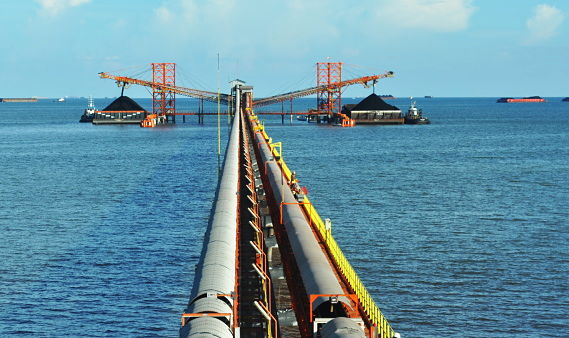 We reproduce below three questions that Securities Investors Association of Singapore (SIAS) has sent to Golden Energy & Resources, and the latter's response. This is part of SIAS' initiative to ask three "carefully researched" questions for each company that it selects ahead of their AGMs.
We reproduce below three questions that Securities Investors Association of Singapore (SIAS) has sent to Golden Energy & Resources, and the latter's response. This is part of SIAS' initiative to ask three "carefully researched" questions for each company that it selects ahead of their AGMs.
"The aim is to help improve the quality of engagement between management and shareholders at general meetings," according to a recent Business Times report.
In addition, SIAS hopes that the questions will help shareholders to focus on the important areas for discussion and give companies an opportunity to constructively engage with shareholders.
To provide the service, SIAS engages a team of analysts -- they are not regular analysts from broking houses -- to scrutinise the companies' annual reports. SIAS, which is a non-profit group, has estimated the cost of the programme at about S$1 million this year to cover 200 companies, reports Business Times. The questions sent by SIAS to various companies to date can be found on its webpage.
| 1. As noted in the Chairman’s Message (page 2 of the annual report), Golden Energy and Resources Limited (GEAR) shares resumed trading upon its listing on the Mainboard of SGX-ST on 12 December 2016, with a 66.9998% stake in PT Golden Energy Mines Tbk (GEMS) as its main operating asset. Currently, as shown in the Operations review (page 11), the group has three main divisions, namely coal mining, coal trading and forestry divisions and the details of the operations are shown on page 10 (Our areas of operations). a. Can management provide shareholders with an update on the group’s growth strategies for all three divisions? Please also include the plans for the group’s export sales and the development plans for the mines. - In FY2016, GEAR achieved broad-based revenue growth across all three business divisions - Our key focus going forward will be to grow our Coal Mining Division, which accounts for over 80% of our total revenue, given the improvement in the outlook for the coal industry - We plan to achieve this by increasing our production output to meet the continuing strong demand growth for thermal coal and increasing reserves through strategic acquisitions of quality coal assets that are earnings accretive to the Group
- Our Forestry Division is an unpolished gem, with most of its book value having been written off GEAR’s balance sheet after the RTO. It was Unifiber’s key asset in the past with a concession size of almost 4 times the size of Singapore at 265,000ha. Subject to market demand, we are cautiously expanding our production to deliver value to shareholders. 2 b. Can the company help shareholders understand its acquisitions strategy? Other than price, what are the other key factors? - As highlighted above, we usually consider a number of different factors in assessing the attractiveness of an acquisition - Aside from price consideration, we will also look at the proximity of the mines to transport networks such as rail and sea ports, the strip ratio and demand for that certain quality of coal to ensure that the cost of mining remains low c. The WRL concession has coal resources that are just 10% of BIB’s 1.8 billion tonnes. What are the benefits to the group of adding small mines considering that developing a mine will usually involve high fixed costs? - In the coal mining industry, there are many considerations pertaining to coal mine acquisitions including, inter alia, the location of the coal mines, the tenure of the concession, the quality of the coal in the concession, demand for such coal quality, pricing expectations of the vendor of the coal concession. For instance, it would not make any sense to pay a large monetary consideration for a concession with large reserves if the tenure cannot last for the life of mine plan or the operational logistics is not able to support the coal production within its tenure. - At GEAR, we remain opportunistic in our acquisition strategy, constantly looking out to acquire mines which we believe we can monetize either via coal productions or subsequent spin-offs. 2. Specifically on the coal mining operations, shareholders would like to ask about: a. BIB: The group has already sought approval from the Indonesian Government to raise BIB’s coal production output to 12 MT per annum for 2017, after the recent increase to 7.5 MT per annum in September 2016. How much output can the existing infrastructure at BIB support? Would there be additional capital expenditure required to produce 12 MT a year? - BIB’s existing infrastructure is able to support coal production output of up to 18 MT a year - Given BIB’s low strip ratio and our low transshipment cost thanks to our wholly-owned infrastructure which includes a dedicated port, we do not expect a substantial amount of additional capital expenditure is required for us to produce 12 MT of coal in FY2017  Near BIB mine: A fast-moving conveyor belt transfers coal from GEAR's stockpile across the 800-m jetty to barges waiting at the far end. NextInsight file photo. Near BIB mine: A fast-moving conveyor belt transfers coal from GEAR's stockpile across the 800-m jetty to barges waiting at the far end. NextInsight file photo. b. KIM: Production at KIM decreased slightly from 2.4 MT in 2015 to 2.0 MT in 2014. Can shareholders understand what caused the lower output in 2016? Similarly, what is the maximum output at KIM based on the existing infrastructure? - KIM is our “cashcow” where we have been producing approximately 2.0 million tonnes every annum depending on weather conditions. We foresee this to remain and for KIM’s production figure to be around 2.0 million or more in 2017. c. WRL: How long would it take to develop WRL into a fully operational mine? What would be the capital expenditure required? - As highlighted in our press release last year, we had acquired WRL which is located strategically in South Sumatra, being in close proximity to existing and new power plant projects in Sumatra and Java, at an attractive price of US$0.60 per tonne of coal reserve. We will be observing the current buoyant coal market on sustainability in coal prices before we commence production operations. In FY2017, our focus is to achieve an ambitious ramp up of our BIB coal production to take full advantage of the buoyant coal market. d. TKS: TKS has been “placed under temporary care and maintenance whilst awaiting a sustainable recovery of the coal market” (page 11). Can management elaborate further on the factors that led to TKS being placed under temporary care and maintenance? - GEAR’s management saw an opportunity to carry out temporary care in maintenance in early 2012 as coal prices started to decline all the way from 2011 to April 2016. Many other coal mining concession owners that continued to produce despite the falling coal prices, trying to weather the downturn, ended up either consolidating or owing their creditors and the government in royalties (some of whom even had their operations suspended). - GEAR management’s foresight enabled GEAR to avoid the aforementioned situation and continued to deliver value to shareholders as a sustainable producer even through the troughs of the coal cycle. A testament of which was the year on year increase in our coal production from our BIB concession to enjoy economies of scale. 3. The average selling price of coal achieved by the group was US$35/MT in 2016. The average selling price will have a huge impact on the profit/loss of the group since more than 80% of the group’s revenue is derived from coal production. a. Can the company help shareholders understand how it manages the commodity price risk of coal? - Coal prices are subject to market forces which are not within our control - In order to mitigate the price risk and maintain our profitability, we have always sought to keep our cash cost low to safeguard our margins. For example, GEAR’s cash cost was reduced from US$23.82 in FY2015 to US$19.49 in FY2016. - GEAR was one of few coal producers which had remained profitable and even increased production during the downtrend of the coal cycle |
Previous story: GOLDEN ENERGY: Our visit to its massive coal mine and excellent jetty infrastructure
Watch video of analysts' visit to BIB mine -->








